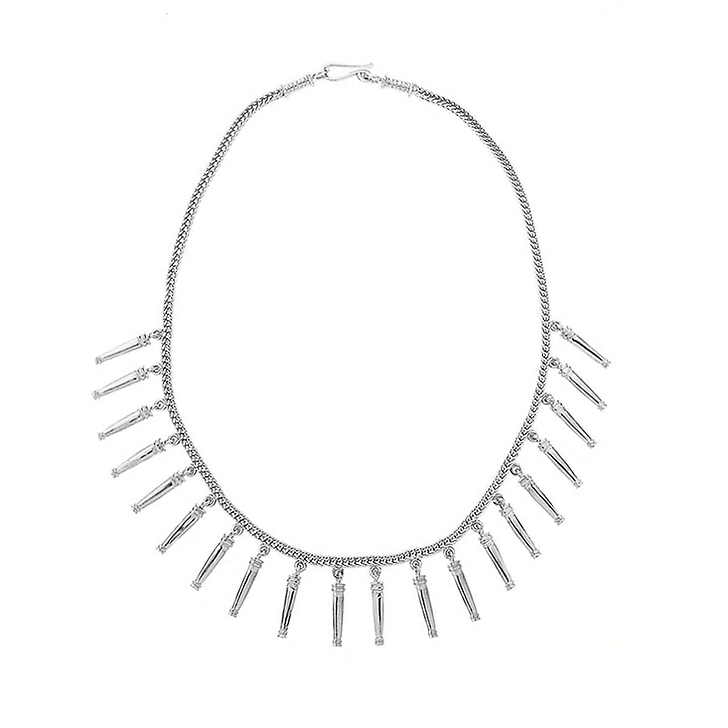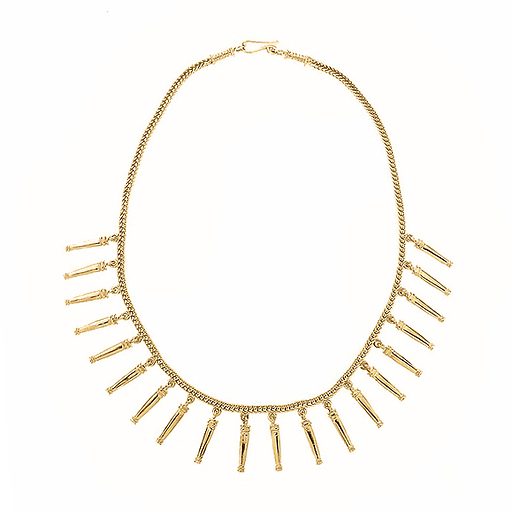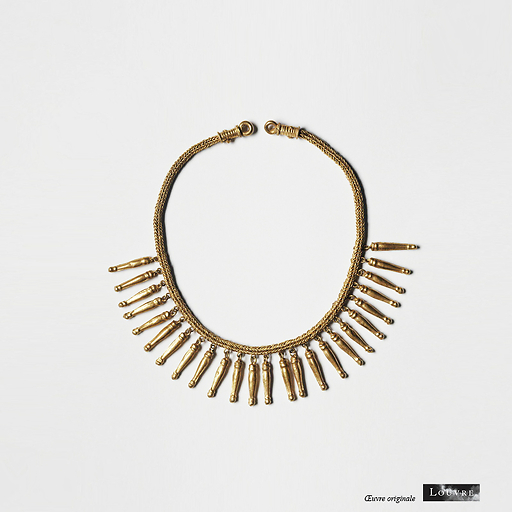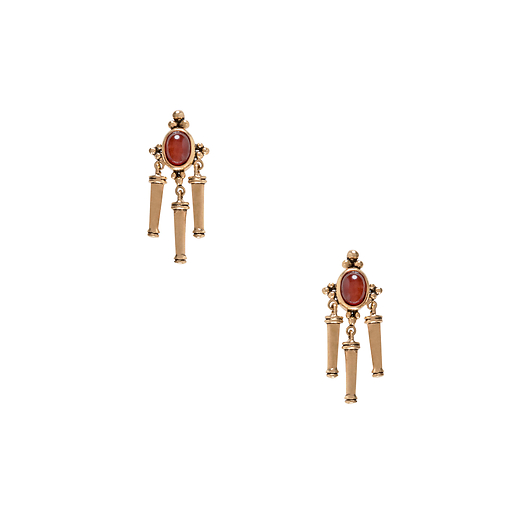This necklace is composed of a flexible chain from which hang a number of small identical pendants in the shape of elongated acorns or very narrow vases. Because of its short length, this type of adornment was worn very close to the neck.
During the Hellenistic Period, Greek goldsmiths liked to decorate...
Read more
This necklace is composed of a flexible chain from which hang a number of small identical pendants in the shape of elongated acorns or very narrow vases. Because of its short length, this type of adornment was worn very close to the neck.
During the Hellenistic Period, Greek goldsmiths liked to decorate necklaces and earrings with pendants in the shape of flowers, fruits, miniature vases, and animal heads. The gold original of this necklace was found in the Kertch region of Crimea (Southern Russia). Many other specimens of this type of jewel with similar pendants were found in the same region. The Louvre necklace is an example of the abundant production of fashionable jewels in the Greek colonies along the Black Sea, which were in contact with both Athens and such Oriental cultures as the Samarans and the Scythians.
It is not known if this particular type of necklace came from Greece, or if it was the imitation of a local design, or an original creation by the goldsmiths of these prosperous cities on the fringes of the Greek world.
Close














